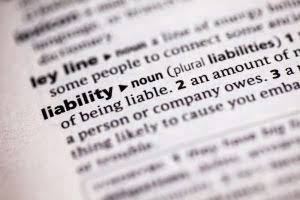
While the total debt to total assets ratio includes all debts, the long-term debt to assets ratio only takes into account long-term debts. The debt ratio of a company tells the amount of leverage it’s using by comparing total debt to total assets. It is calculated by dividing total liabilities by total assets, with higher debt ratios indicating higher degrees of debt financing. Debt ratios vary greatly amongst industries, so when comparing them from one company to the other, it is important to do so within the same industry. The term debt ratio refers to a financial ratio that measures the extent of a company’s leverage. The debt ratio is defined as the ratio of total debt to total assets, expressed as a decimal or percentage.
Do you already work with a financial advisor?
- Investors want to make sure the company is solvent, has enough cash to meet its current obligations, and successful enough to pay a return on their investment.
- Thus, lenders and creditors will charge a higher interest rate on the company’s loans in order to compensate for this increase in risk.
- The long-term debt ratio focuses specifically on a company’s long-term debt (obligations due in more than a year) relative to its total assets or equity.
- Creditors, on the other hand, assess the possibility of giving additional loans to the company.
- Including preferred stock in total debt will increase the D/E ratio and make a company look riskier.
- Stakeholders, especially creditors, may view a high debt ratio as an increased risk, potentially impacting the company’s borrowing costs and terms.
It compares total existing debts to available assets, resulting in a percentage or ratio. The debt-to-asset ratio helps identify the potential borrower’s riskiness and liquidity — or their ability to quickly turn assets into cash. The debt-to-asset ratio represents the percentage of total debt financing the firm uses as compared to the percentage of the firm’s total assets. It helps you see how much of your company assets were financed using debt financing.
Debt Ratio by Industry
In essence, it indicates the proportion of a company’s assets that are financed by debt as opposed to equity. On the other hand, companies with very low Debt to Asset Ratios might be providing unnecessarily low returns to shareholders. Moreover, it can often be worthwhile to use debt in order to raise capital for profitable projects which the equity investors may be unable to finance on their own. For example, it is sometimes the case debt to asset ratio that a company can generate more profit in the medium term if it accepts reduced revenues in the short term. You see this for instance in cases where a company needs to divest itself from an unprofitable subsidiary or revenue stream. If the company has a high debt burden, however, it may be unable to make such decisions because its interest and principal payments make it unable to tolerate even a short-term decline in revenue.
Debt to equity ratio: Calculating company risk

The results of this measure are looked at by creditors and investors who want to know how financially stable a company can be. Conversely, technology startups might have lower capital needs and, subsequently, lower debt ratios. Comparing a company’s debt ratio with industry benchmarks is crucial to assess its relative financial health. This can include long-term obligations, such as mortgages or other loans, and short-term debt like revolving credit lines and accounts payable. The debt to asset ratio is a financial metric used to help understand the degree to which a company’s operations are funded by debt.
A company’s debt-to-asset ratio is one of the groups of debt or leverage ratios that is included in financial ratio analysis. The debt-to-asset ratio shows the percentage of total assets that were paid for with borrowed money, represented by debt on the business firm’s balance sheet. It also gives financial managers critical insight into a firm’s financial health or distress. Debt ratio is a metric that measures a company’s total debt, as a percentage of its total assets. A high debt ratio indicates that a company is highly leveraged, and may have borrowed more money than it can easily pay back.


It indicates an extreme degree of leverage, which consequentially means better returns in the case of success (provided you can find someone willing to invest in a company with a high-risk profile). In doing this kind of analysis, it https://www.bookstime.com/articles/credit-memo is always worth scrutinizing how the figures were calculated, in particular regarding the calculation of Total Debt. Information sources do not always disclose the details of how they calculate metrics such as the Debt to Asset Ratio.
The debt ratio focuses exclusively on the relationship between total debt and total assets. However, companies might have other significant non-debt liabilities, such as pension obligations or lease commitments. Companies with high debt ratios might be viewed as having higher financial risk, potentially impacting their credit ratings or borrowing costs. As businesses mature and generate steady cash flows, they might reduce their reliance on borrowed funds, thereby decreasing their debt ratios. Newer businesses or startups might rely heavily on debt financing to kick-start operations, leading to higher debt ratios.
What is your risk tolerance?


